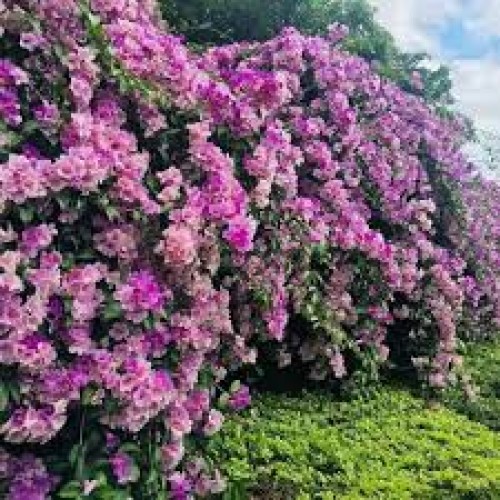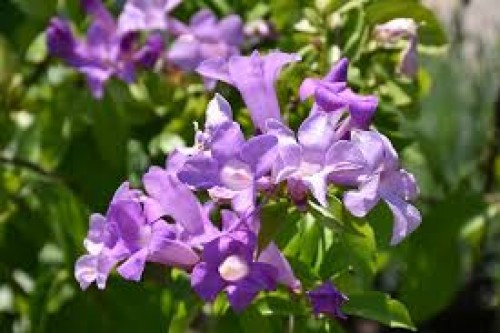60%
off
off
-
Sold
-

-

out
Garlic Vine (Mansoa alliacea)
Garlic Vine, scientifically known as Mansoa alliacea, is a tropical, evergreen climbing plant renowned for its vibrant, trumpet-shaped flowers and a distinctive garlic-like aroma emitted when its leaves are crushed. Native to South and Central America, it has gained popularity in various regions for both ornamental and medicinal purposes.
Botanical Overview
- Scientific Name: Mansoa alliacea
- Family: Bignoniaceae
- Common Names: Garlic Vine, False Garlic, Ajo Sacha
- Origin: Northern South America; widely cultivated in tropical and subtropical regions
- Growth Habit: Woody climbing vine
- Height: Typically 2–3 meters; can extend up to 6 meters with support
Key Features
- Flowers: Funnel-shaped blossoms that bloom in clusters, exhibiting a color transition from deep purple to lavender and finally to white as they age. The plant typically flowers twice a year, in spring and autumn.
- Foliage: Glossy, dark green leaves that release a garlic-like scent when crushed, although the plant does not produce a noticeable aroma when left undisturbed.
- Fragrance: The crushed leaves emit a strong garlic odor, which is the basis for its common name.
- Wildlife Attraction: The vibrant flowers attract pollinators such as bees and butterflies, enhancing garden biodiversity.
Cultivation & Care
- Sunlight: Thrives in full sun to partial shade; requires at least 4–6 hours of sunlight daily.
- Soil: Prefers well-drained, fertile soil with a slightly acidic to neutral pH.
- Watering: Requires regular watering to keep the soil consistently moist but not waterlogged. During hot, dry periods, watering twice a day may be necessary.
- Fertilization: Apply a balanced fertilizer every 2–3 weeks during the active growing season to promote lush foliage and abundant flowering.
- Pruning: Prune after each flowering cycle to maintain shape, encourage bushier growth, and stimulate new blooms.
- Propagation: Easily propagated through semi-hardwood cuttings with at least three nodes; rooting is enhanced in a moist sand and compost mixture.
- Support: Requires a trellis, fence, or other support structures to climb effectively.
Uses & Benefits
- Ornamental: Widely used in landscaping for its striking flowers and rapid growth, making it ideal for covering fences, trellises, and pergolas.
- Medicinal: Traditionally used in herbal medicine to treat ailments such as colds, flu, fever, arthritis, rheumatism, and respiratory issues. The leaves, stems, and roots are utilized in various preparations, including teas and decoctions.
- Aromatherapy: The garlic-like scent of crushed leaves is believed to have insect-repelling properties and is used in traditional practices to ward off pests.
- Culinary Substitute: In some cultures, the leaves are used as a substitute for garlic in cooking, providing a similar flavor profile.
- Environmental: Acts as a natural air purifier and contributes to the ecological balance by attracting pollinators.
Considerations
- Invasiveness: While not typically invasive, regular pruning is necessary to control its vigorous growth and prevent it from overtaking other plants.
- Toxicity: Generally considered non-toxic; however, it's advisable to consult local guidelines regarding its use, especially in households with pets or children.
- Maintenance: Low-maintenance plant but requires consistent care for optimal flowering and growth.